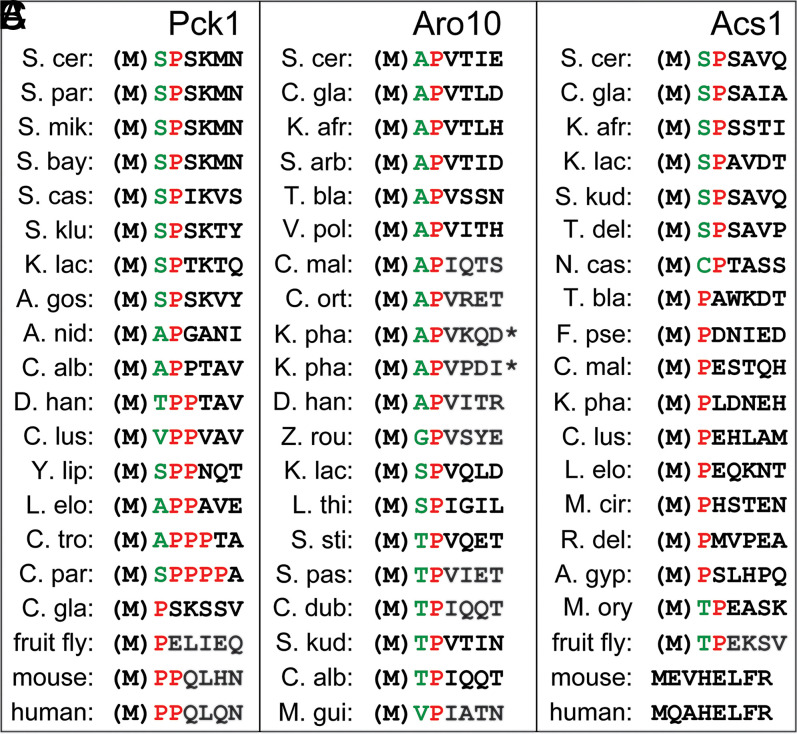Fig. 5.
Evolution of Nt sequences in Pck1 (A), Aro10 (B), and Acs1 (C). [The latter enzyme is Ac-CoA synthetase (46).] (M) denotes the initially present Nt-Met residue, which is cotranslationally removed if a residue at position 2, the one to become Nt, is not larger than Val (73). Note extensive but apparently selection-constrained transitions, on evolutionary timescales, between the Nt-P configuration (which is directly recognized by Gid4-GID [A]) and other Pro-containing Nt-motifs, including SP, AP, TP, CP, PP, TPP, VPP, SPP, APP, APPP, and SPPPP. All of these Nt-sequences are either known or expected to be substrates of Fra1 and/or Icp55 aminopeptidases, which are conserved from fungi to animals and plants. These enzymes would trim the above Nt-motifs, yielding a single Nt-P, the main recognition determinant of a Pro/N-degron (also in the text).

